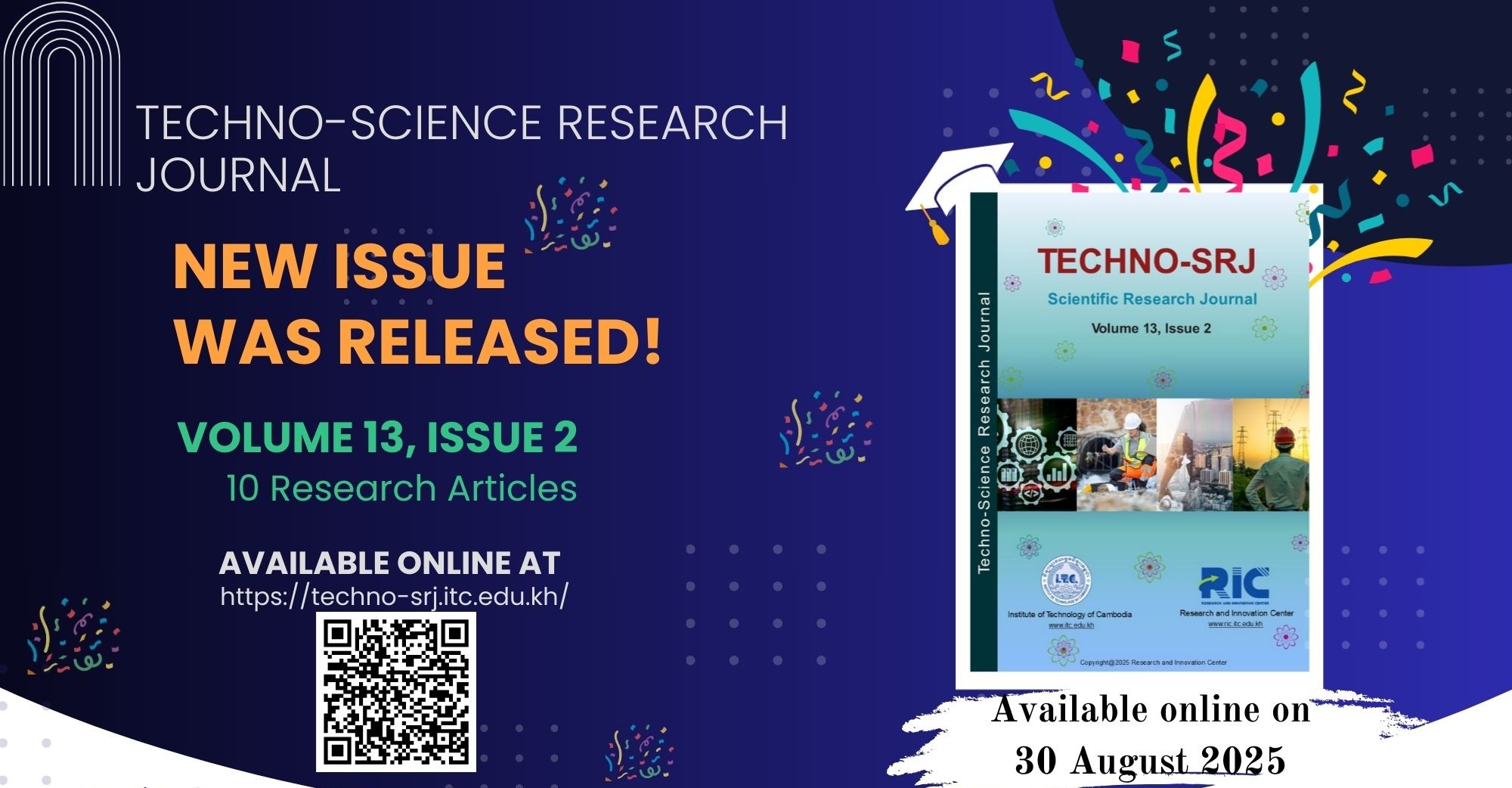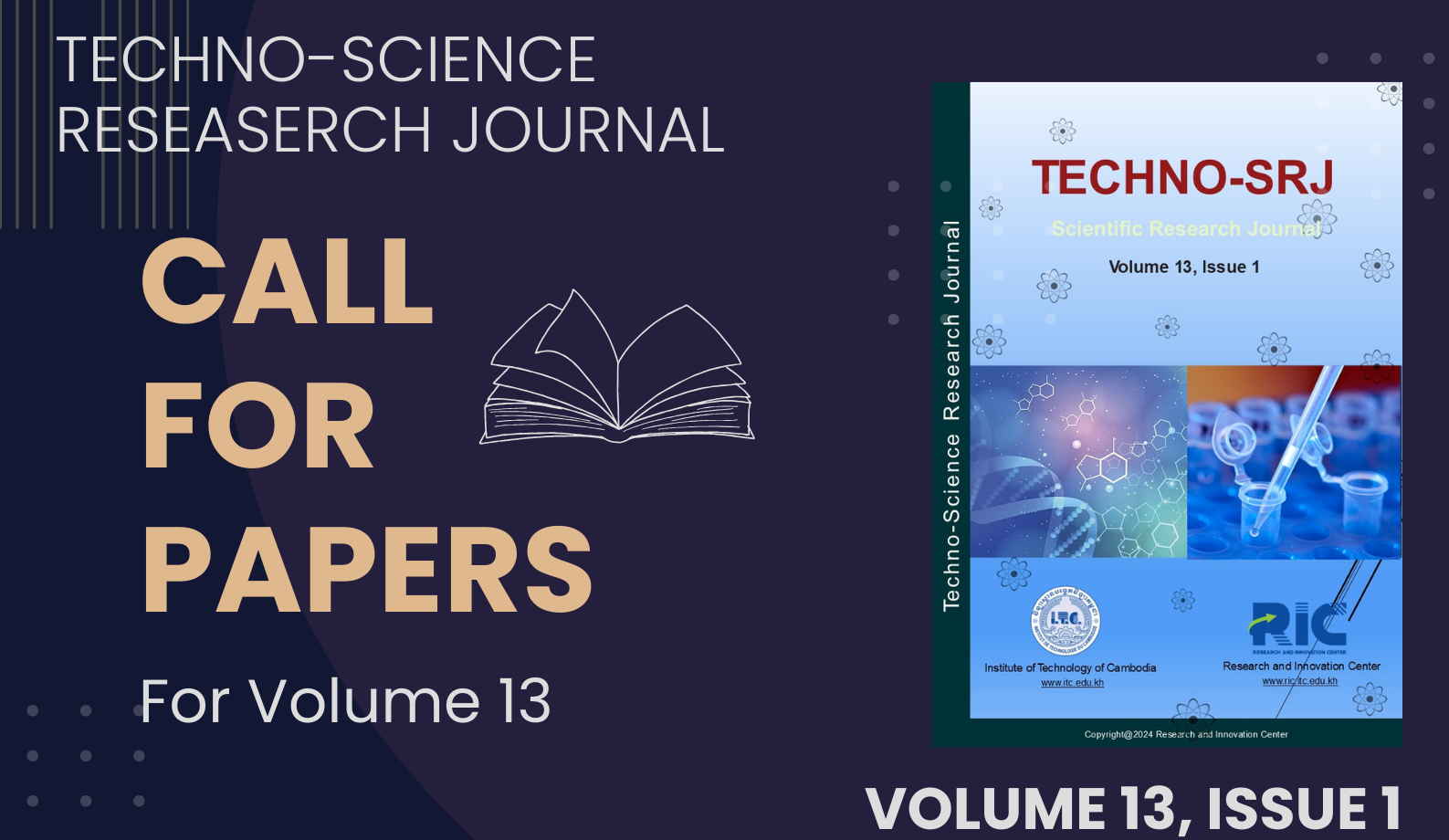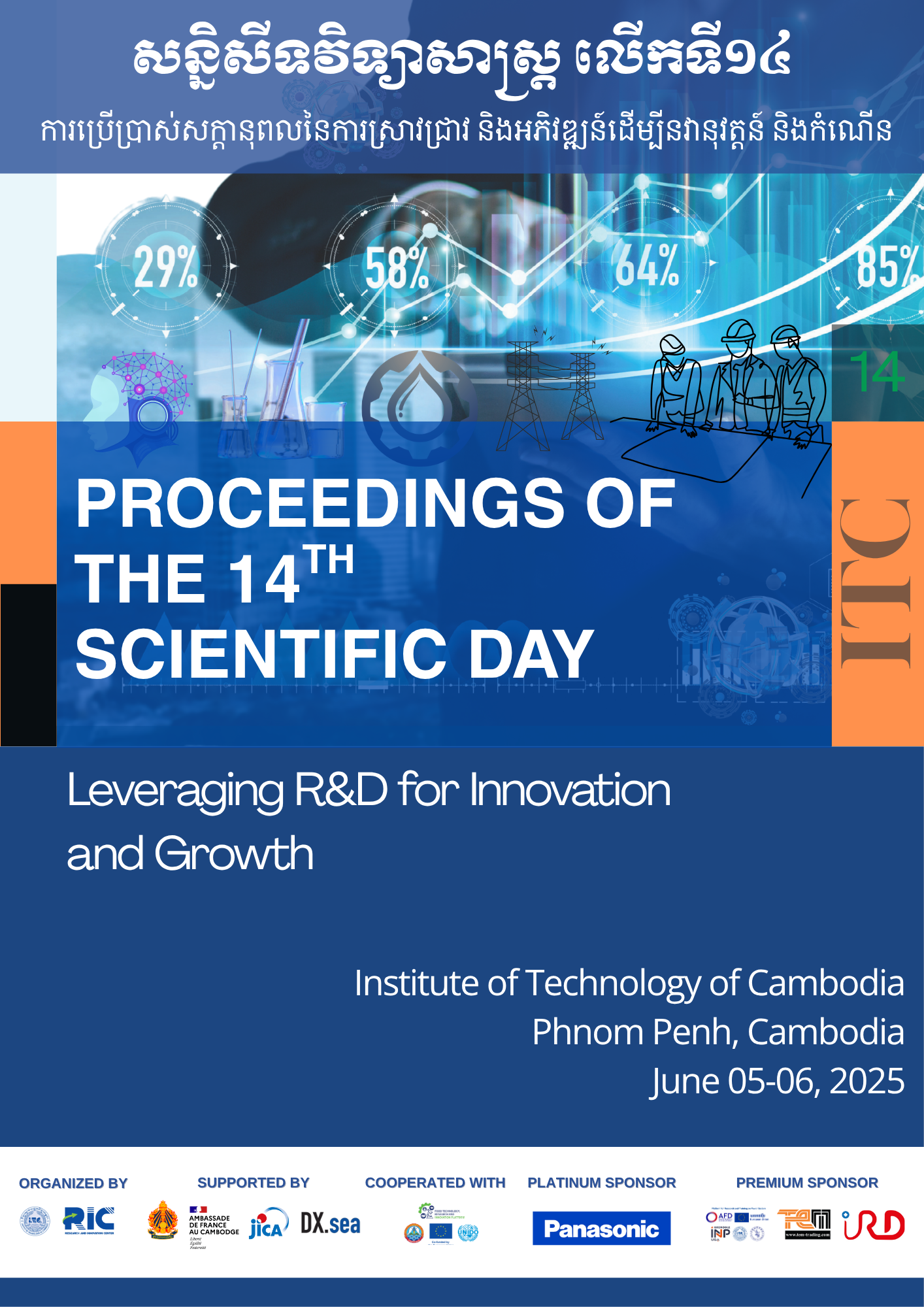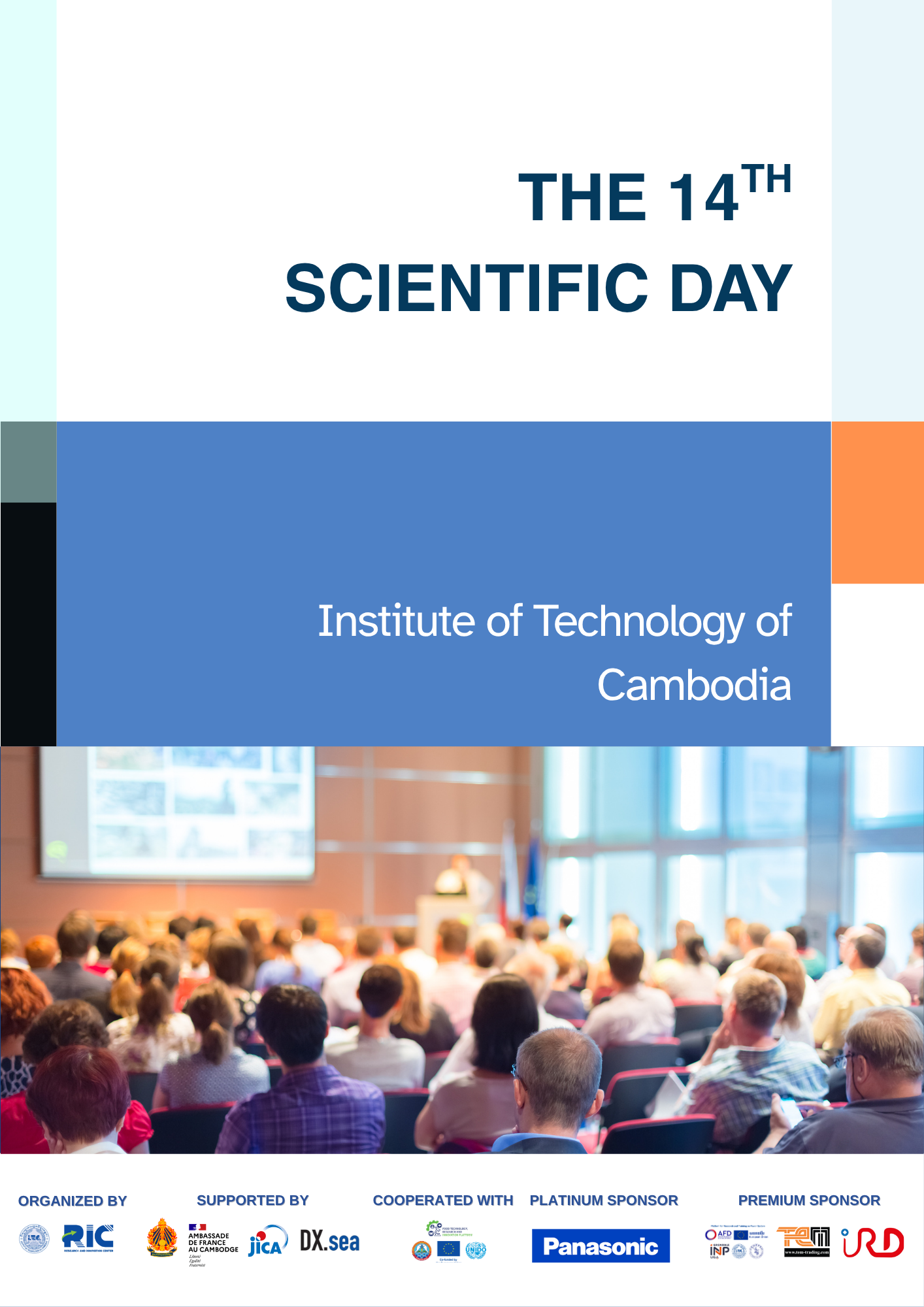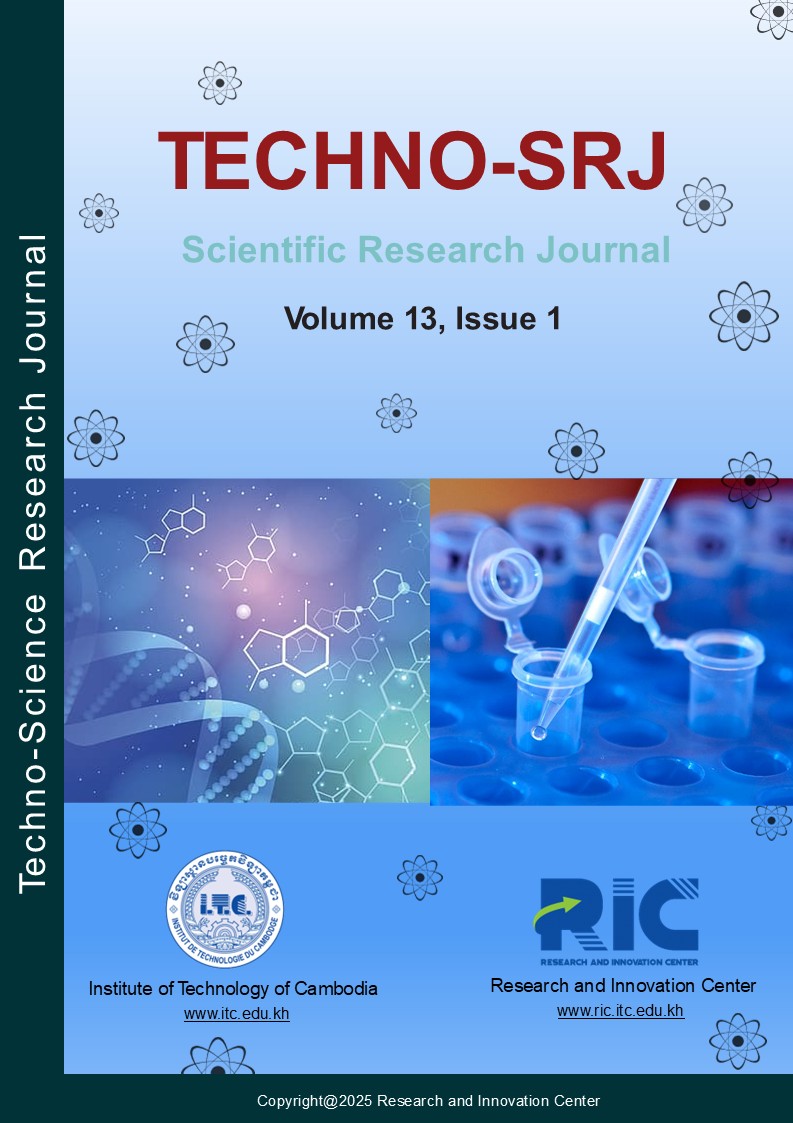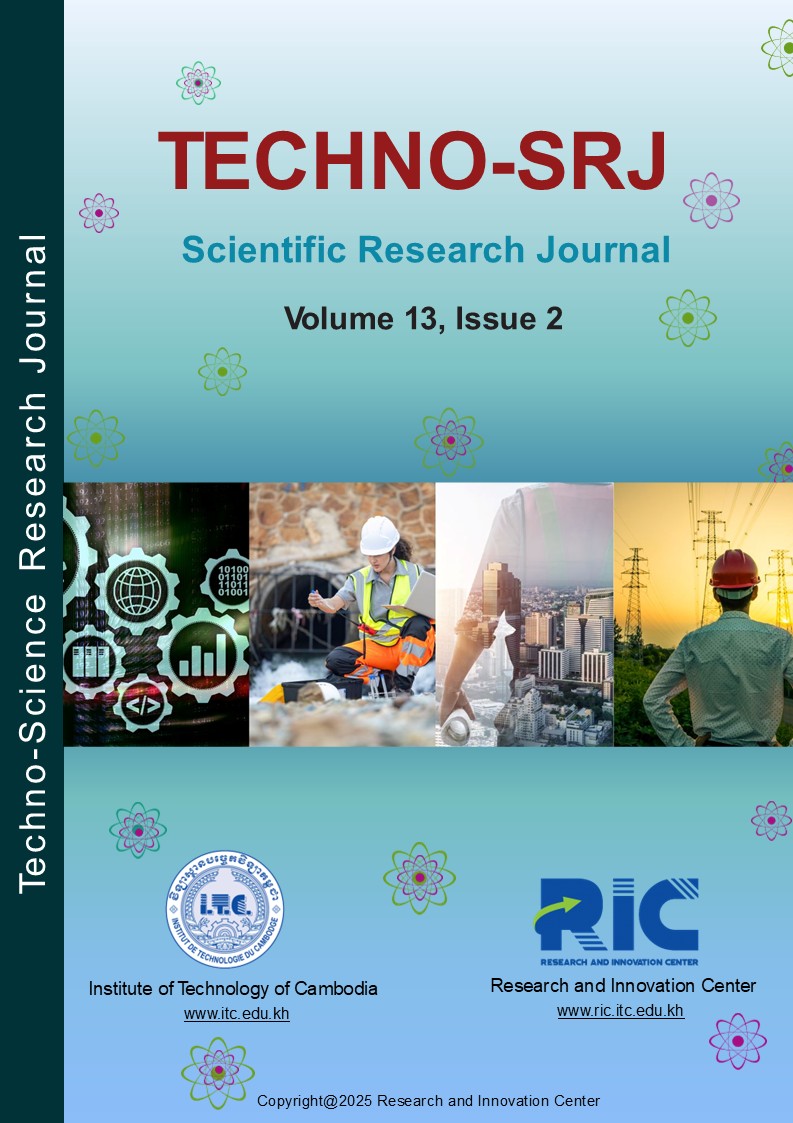Latest Issue
Empowering Education with Online Khmer Handwritten Text Recognition for Teaching and Learning Assistance
Published: August 30,2025Undergraduate Student Dropout Prediction with Class Balancing Techniques
Published: August 30,2025Status of Seawater Quality at Koh Rong Island, Sihanoukville, Cambodia
Published: August 30,2025Low-Complexity Detection of Primary Synchronization Signal for 5G New Radio Terrestrial Cellular System
Published: August 30,2025Word Spotting on Khmer Printed Documents
Published: August 30,2025Tuning Hyperparameters Learning Rate and Gamma in Gym Environment Inverted Pendulum
Published: August 30,2025Examining Passenger Loyalty in Phnom Penh Public Bus System: A Structural Equation Modelling Approach
Published: August 30,2025Prediction on Load model for future load profile of Electric Vehicle charging demand in Phnom Penh
Published: August 30,2025Economic Study on Integrating PV-DG with Grid-Tie: Case Study in Cambodia
Published: August 30,2025Recent Articles
In Cambodia, rice liquors or Sra Sor is locally produced in large amounts every year. This traditional beverage is made from the combination of rice starch with different traditional starters consisting of molds and fermenting yeast. Recently, the quality and the ethanol yield of rice wine produced by traditional starter were notably low. Thus, the utmost concern is to improve the quality of the product in terms of physicochemical and sensory pro
The study was carried out on detection of Enterococcus spp. in fermented and pickled vegetable products from markets in Phnom Penh and determination of their antibiotic resistance. Thirty-nine samples were collected from six different sites and classified into six categories of fermented and pickled vegetable products. Samples were subjected to physicochemical and microbiological analysis, followed by isolation and antibiotic susceptibility test
Soy sauce is a liquid condiment originated from China and is widely used not only in China, but also in Asia including Cambodia. Although some soy sauces have been produced in Cambodia, their quality has not yet been widely recognized in Cambodia and the study of soy sauces in Cambodia is still limited. The objective of this survey aimed to collect information about the current status on soy sauce consumption in Cambodia, for future research and
White pepper (Piper nigrum L.) is commonly used in food products such as light-colored sauces, soups, salad dressing, and mayonnaise. In general, white pepper is produced by water retting that is known as traditional method. Therefore, this study focused on the optimization of white pepper processing from green pepper berries by pectinase enzyme. It was conducted in different pretreatment time (0, 5, 10 min), incubation at 40 °C for 16 hours and
Biomass briquette is made from many types of biomass materials such as rice husk and bagasse which is partially the city waste; however, they are potential energy sources and widely available in Cambodia. Rice husk and bagasse are becoming one of the useful energy sources to help reducing organic waste in the city once being converted into a ready-to-use form. In addition, to form the rice husk and bagasse to be in briquette shape, binding materi
Increasing waste disposal and energy demand are a problem in the city today. Densification of biomass waste from sawdust and tree leaves into solid fuel briquette not only reduces waste reduction but can also be an alternative source. Raw materials and binders are two essential variables, among other important variables, presented in this article. Fish oil extracted from fish residues is a combustible binder with a high heating value. Investigati
This paper presents flexural strength, flexural modulus as well as the weight percentage of porosity in specimen by mixing two kind of epoxy resins for Sikadur® 31 CF Normal and Sikadur® 52 TH. The ratio of mixed Sikadur 31-52 following by 100%-0%, 66%-33%, 50%-50%, 33%-66% and 0%-100%, respectively with 3, 6, and 9 days curing time. The aim of this project helps to choose the correct proportions for renovating archeological structures, and espec
This paper provided a design process of a new structure of Computer Numerical Control (CNC) machine that can move 3-axis simultaneously and is capable of engraving specimens such as wood and plastic properly. The fabrication method and machine control were divided into three major steps. Firstly, the mechanical systems of the CNC structure such as the frame, joints, and movable axis were built. Secondly, the electronic devices and microcontroller
This paper describes the mathematical model, control and simulation of 3DoF (Degrees of Freedom) robot manipulator moving in a three-dimensions Cartesian coordinate frame. The four Denavit-Hartenberg (D-H) parameters are used to determine the homogenous transformations matrices of the links of the robot and express the robot’s forward kinematics. Both link position and orientation are embedded in the homogeneous transformation matrix. The geometr
The robot localization is a crucial task that needs to be solved as a part of the navigation problem for an autonomous robot. In order to estimate the location of a robot in the environment, various sensors are used to extract meaningful information from measurements to acquire knowledge about the robot’s environment and motion. Due to the fact that the sensor uncertainty is random, it is impossible to find an accurate pose for the robot by only
E-mail Alert
Add your e-mail address to receive forthcoming issues of this journal




